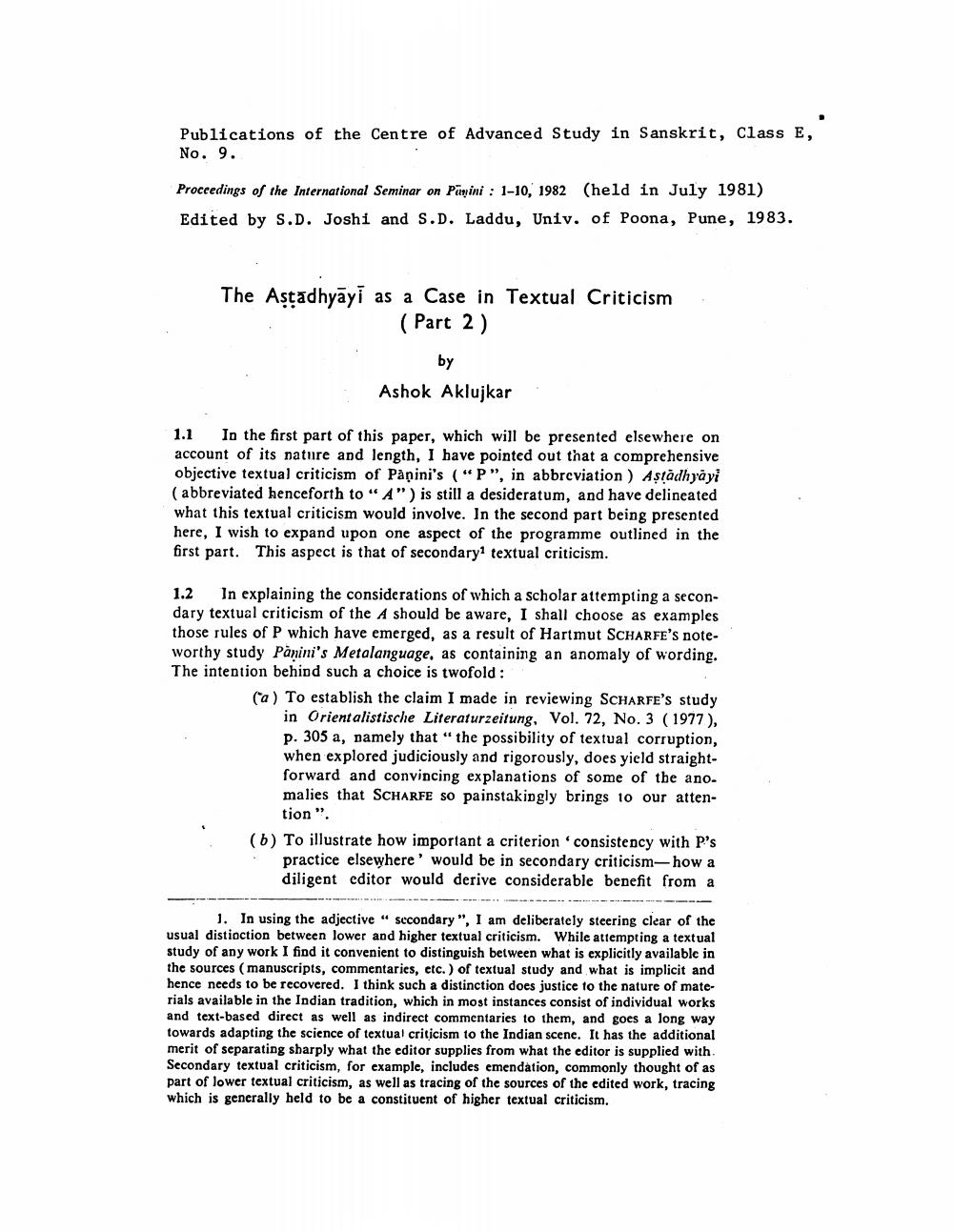________________
Publications of the Centre of Advanced Study in Sanskrit, Class E, No. 9.
Proceedings of the International Seminar on Pämini : 1-10, 1982 (held in July 1981) Edited by S.D. Joshi and S.D. Laddu, Univ. of Poona, Pune, 1983.
The Astadhyāyi as a Case in Textual Criticism
(Part 2)
Ashok Aklujkar
1.1 In the first part of this paper, which will be presented elsewhere on account of its nature and length, I have pointed out that a comprehensive objective textual criticism of Panini's ("P", in abbreviation ) Astādhyāyi ( abbreviated henceforth to "A") is still a desideratum, and have delineated what this textual criticism would involve. In the second part being presented here, I wish to expand upon one aspect of the programme outlined in the first part. This aspect is that of secondary textual criticism.
1.2 In explaining the considerations of which a scholar attempting a secondary textual criticism of the A should be aware, I shall choose as examples those rules of P which have emerged, as a result of Hartmut SCHARFE's noteworthy study Panini's Metalanguage, as containing an anomaly of wording. The intention behind such a choice is twofold:
(a) To establish the claim I made in reviewing SCHARFE's study
in Orientalistische Literaturzeitung, Vol. 72, No. 3 (1977), p. 305 a, namely that "the possibility of textual corruption, when explored judiciously and rigorously, does yield straightforward and convincing explanations of some of the ano. malies that SCHARFE SO painstakingly brings 10 our atten
tion". (b) To illustrate how important a criterion consistency with P's
practice elsewhere would be in secondary criticism-how a diligent editor would derive considerable benefit from a
1. In using the adjective " secondary ", I am deliberately steering clear of the usual distioction between lower and higher textual criticism. While attempting a textual study of any work I find it convenient to distinguish between what is explicitly available in the sources (manuscripts, commentaries, etc.) of textual study and what is implicit and hence needs to be recovered. I think such a distinction does justice to the nature of materials available in the Indian tradition, which in most instances consist of individual works and text-based direct as well as indirect commentaries to them, and goes a long way towards adapting the science of textual criticism to the Indian scene. It has the additional merit of separating sharply what the editor supplies from what the editor is supplied with Secondary textual criticism, for example, includes emendation, commonly thought of as part of lower textual criticism, as well as tracing of the sources of the edited work, tracing which is generally held to be a constituent of higher textual criticism.




